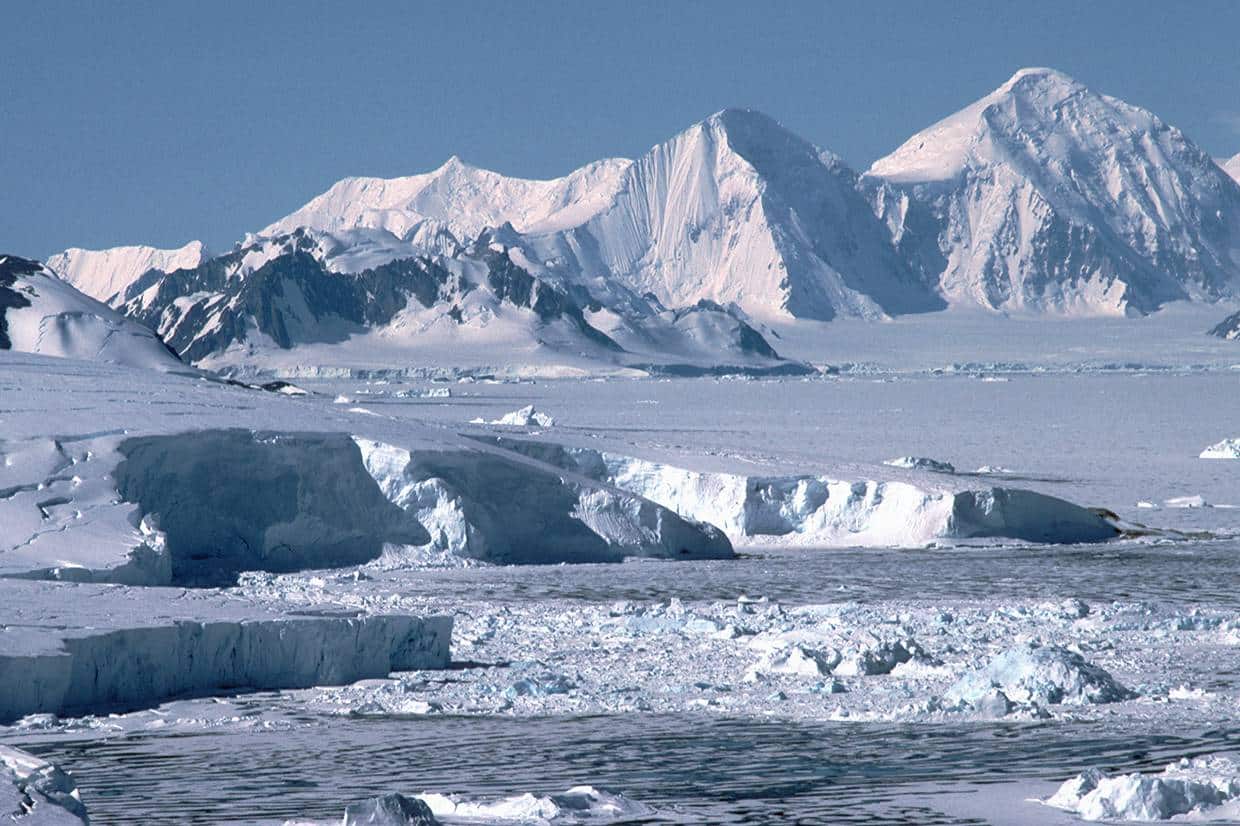
Future of Antarctica
Antarctica is fully protected from mineral exploitation and conflict. Under the Antarctic Treaty, Antarctica is a continent dedicated to peace and science. The Environmental Protocol (1991) also currently sets out a comprehensive protection of Antarctica.
Warm up
As energy/mineral reserves and fishing resources are exhausted or depleted elsewhere and tourist numbers on Antarctica continue to escalate, could the Antarctic Treaty and its accompanying Protocol and CCAMLR be modified or even disregarded to provide for development on the last frontier?
The continent is thought to be rich in minerals including coal and oil as well as precious minerals such as gold and silver. There is also a growing interest from bioprospectors who search for genetic and biochemical resources from flora and fauna on Antarctica. The pressures to exploit Antarctica’s natural resources on land and in the ocean is likely to increase in the future. Should the Treaty be upheld in its current state?
The picture below shows the pristine landscape of Antarctica.

Activity
Imagine that the Antarctic Treaty has been modified to include development. Imagine what Antarctica could look like in the future if laws and regulations were relaxed to allow the building of a commercial airport, tourist buildings and shops, a quarry and on shore and off shore oil rigs.
-
Discuss: Would it matter if Antarctica looked like this in the future? Why?
Cold facts
What activities threaten the sustainability of Antarctica?
Tourism
The number of tourists have increased substantially over the last 15 years. In 1992 the number of tourists landing on Antarctica was 6,704 whereas in 2008/9 it was just over 27,000. This increase in tourists may cause impacts on the environment such as trampling of vegetation, disturbing wildlife and introduction of alien species in localised sites. The vast majority of the Antarctic continent and outlying islands has not been visited by tourists but there may be pressure on commercial operators to find new sites.
Mining
Mining is banned indefinitely (with a provision for review in 2048 onwards in Antarctica under the Environmental Protocol). However, there are deposits of minerals on Antarctica that could be exploited including oil, coal and iron ore. In addition to the fact that such activity is prohibited, exploiting minerals on and around Antarctica would be very expensive due to the thick ice, inaccessibility due to Antarctica’s remoteness and the very harsh climate.
-
Learn more at: BAS: Environmental Protocol
Fishing
Exploitation of the marine life in the Southern Ocean is carefully managed and protected by CCAMLR (Commission for the Conservation of Antarctic Marine Living Resources). However, despite conservation measures, illegal, unregulated and unreported (IUU) fishing continues which threatens to undermine conservation efforts. Further action will probably require worldwide consumer boycotts of unsustainably caught fish in the Southern Ocean and engagement with landing ports around the Southern Ocean.
Bioprospecting
Antarctica has a unique biodiversity that has begun to interest companies and bioprospectors. Antarctica is of particular interest because little is known about Antarctic biota and secondly because of the extremes of environment including temperature, aridity and salinity mean that biota will have evolved unique characteristics for survival that could be used to produce commercial products.
Bioprospectors have been interested in an alkali-tolerant yeast, found in sediments of Lake Vanda, fish, sponges, lichen and mosses as well as some micro-organisms. Anti-freeze glycoproteins found in some species of Antarctic fish which stop them freezing could be used to improve fish farm production in cold climates, extend the shelf-life of frozen food and improve the preservation of transplanted tissue. It was first discussed within the Antarctic Treaty System in 2002. Since then it has been discussed during the following meetings of:
-
SCAR – Scientific Committee on Antarctic Research
-
CEP- Committee for Environmental Protection
-
ATCM – Antarctic Treaty Consultative Meeting
Bioprospecting is taking place in Antarctica and it is possible that these activities will increase in the future. A number of commercial products have been produced directly from Antarctic genetic material although some research is now quite advanced. The Antarctic Treaty does not currently have formal or separate rules for regulating access and benefit sharing arising from bioprospecting. The Protocol does provide for the protection of flora and fauna and protection of the environment and national legislation regulates all activities undertaken in Antarctica.
Bioprospecting has the advantage of being quite a sustainable use of resources as generally very small samples are required for scientific research meaning that the environmental impact can remain quite small. As there are a limited number of people conducting activities in Antarctica it makes it much easier to monitor bioprospecting activities in situ, although tracking and regulating such genetic resources outside of the Antarctic is much more difficult. In addition, bioprospecting could result in increased funding for basic Antarctic research. Obviously any bioprospecting which involved harvesting of species could have adverse environmental impacts.
Should development be allowed?
Tourism, mining, fishing and bioprospecting are just four activities that could threaten the sustainability of Antarctica in the future. All of these interests have the potential to damage, change or destroy Antarctica and its surrounding oceans if not carefully controlled, managed or banned. However there could be beneficial effects by raising awareness of the fragility of the Antarctic environment and the need for its preservation.
Student Activities
Opinions
Listen to the opinions of Sidney and Laura and fill in the downloadable chart.
Write an essay
“Discuss the view that the preservation of Antarctica as a site for peace and science is merely a romantic idea and is very unrealistic in modern times.” 30 marks.







